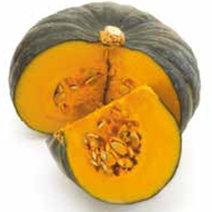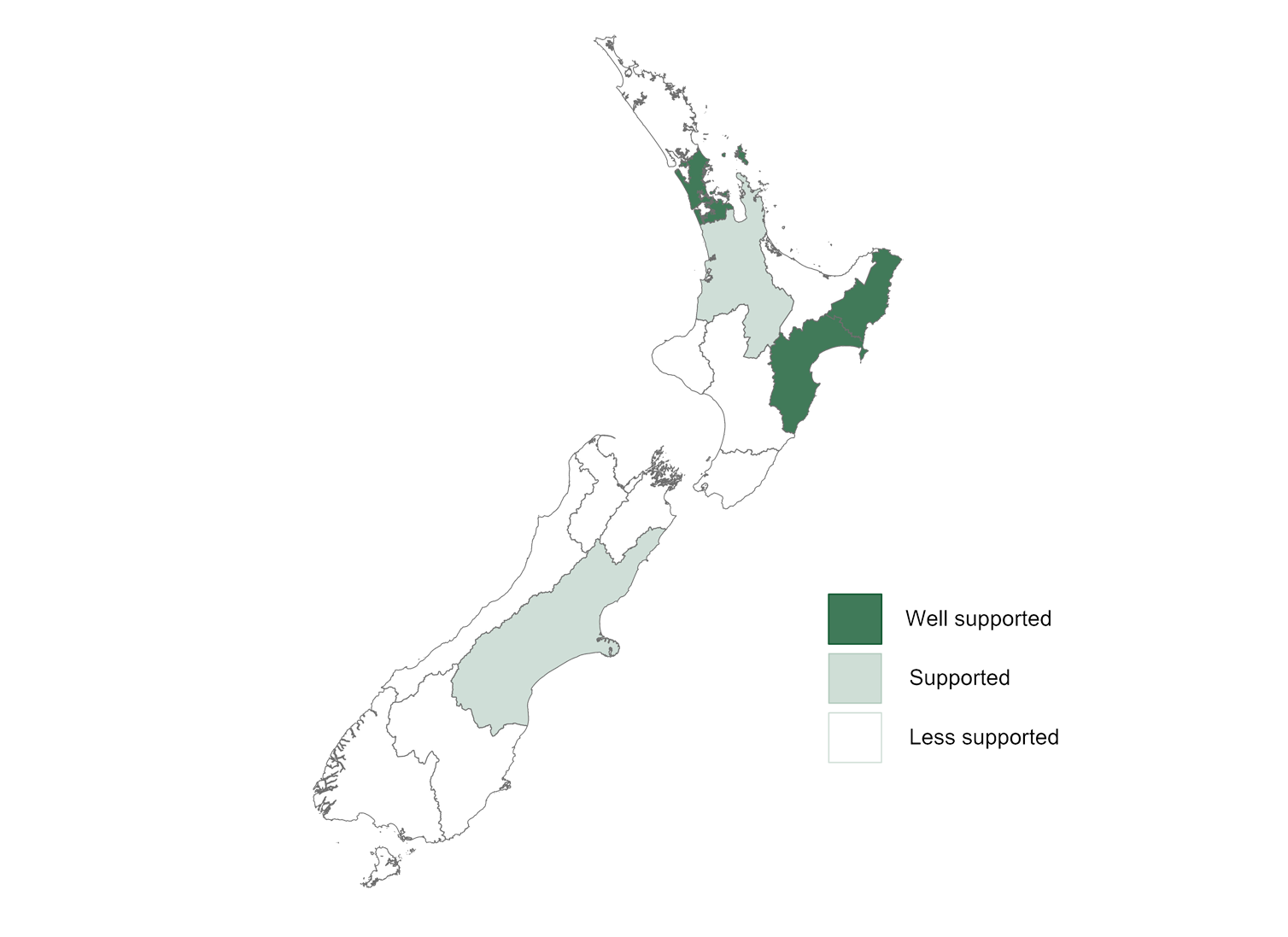
Land use fact sheet
Squash
Buttercup squash are mostly grown in the Hawke's Bay and Gisborne for export to Japan and Korea, where it’s a dietary staple.
Squash is one of the fastest growing field crops. Buttercup squash plants produce around 11 t/ha in about 100 days from planting. Squash is vine ripened and handpicked between December and June.
 Overview
Overview
Regions
Most of NZ’s squash is grown in Hawke's Bay and Gisborne. It’s also grown in Auckland, Canterbury and Waikato.
Growing conditions
Squash requires flat, fertile land, where machinery can operate. Squash doesn’t tolerate waterlogged, cold sites.
Climate
Buttercup squash need to be frost-free and have a constant supply of water during the growing season.
Commercial scale
The average size of a squash operation in 2018 was 275ha. Smaller blocks can be leased to other growers.
Getting started
You’ll need to be registered as a grower, have a supply contract and access to machinery and enough land to make a return.
Skills / employment
Planting and crop management is often done by contractors. Harvesting and packing is seasonal from December to June.
 Regions
Regions
Nealy 60% of the commercial buttercup squash crop is grown in Hawke's Bay, followed by Gisborne with just over 30%. Auckland contributes around 5% and smaller crops can be found in Canterbury and Waikato.
The total area of squash has held steady over the past decade, at 6500-7500 hectares in total.
Get a report on your whenua
Enter the details of your whenua into our search to create a downloadable report showing information about the environment, economy, and climate in your region — and the potential that creates for development.

 Commercial scale
Commercial scale
The average size of a squash operation in 2018 was 275ha. Smaller blocks can be leased to a contract grower, who may be able to use it alongside other blocks of land to form enough scale to grow commercially.
 Getting into the industry
Getting into the industry
Leasing
Most people who own land used for squash will have leased the land either to a grower, or directly to a pack house.
It's important to get advice from qualified, experienced advisors before you commit to leasing your whenua.
Growing under contract
To get into the buttercup squash industry you must register as a grower with the NZ Buttercup Squash Council (NZBSC), and arrange a contract with a registered exporter. NZBSC can give you details for registered exporters.
Most major exporters have distribution desks in Japan. They can form relationships directly with wholesale and retail markets where much of the added value is. They’re also likely to have onshore processing and packing facilities.
The price to the grower (also known as the contractor) is set down in a forward contract with the packhouse. It's important to have a contract in place before planting. To be able to supply a contract, you'll need access to machinery and enough land to make a return.
You should start talking to an exporter up to a year in advance if you're interested in growing squash under contract.
 Skills and employment
Skills and employment
As with many process crops, much of the work is done by contractors and is seasonal. Work gangs organised by the pack house will harvest the crop and pack it for export. Hand picking takes place between December and June.
 Compliance
Compliance
Levies
Growers are supported by Horticulture New Zealand and the New Zealand Buttercup Squash Council (NZBSC).
Horticulture New Zealand collects compulsory levies under the Commodity Levies Act 1990. The levy is currently $0.14c per $100 of sales. This can change, so check their website to make sure you have the latest information.
Horticulture New Zealand membership levy
The NZBSC is the Recognised Product Group for New Zealand Export Buttercup Squash under the New Zealand Horticulture Export Authority (HEA) Act 1987. This means they're responsible for minimum grade standards, food safety and quality assurance programmes. Contact NZBSC for information about grower registration and other requirements.
Council regulations
Many councils require consents for access to irrigation water and for other activities related to changing land use.
Speak to your local council before investing in any detailed planning or development work to ensure you are aware of any consents or permits needed to start growing squash on your whenua.
Meeting council compliance obligations
National policy statement for freshwater management (NPSFM)
The National Policy Statement for Freshwater 2020 gives local authorities direction on how they should manage freshwater under the Resource Management Act 1991. As such, some local authorities require growers and farmers to create a Farm Environment Plan (FEP). Make sure you're familiar with the FEP expectations in your region. Check with your local council about the requirements for your whenua or planned development.
Even if your region doesn't yet require an FEP, it's good practice to put one in place for your whenua as part of your business plan. The Foundation for Arable Research (FAR) provides templates you can use to create an FEP.
 Growing conditions
Growing conditions
Buttercup squash perform well in paddocks with a moderate to good soil structure with a good depth of topsoil. Flat paddocks are most suitable because you'll need access for machinery.
Plants will not tolerate waterlogging, especially under cold conditions. Moderate shelter is ideal. The large, soft leaves of buttercup squash are easily damaged by strong winds, and wind can also cause damage to the fruit through vine markings and leaf rub. However, too much shelter can increase the risk of mildews and rots.
Buttercup squash prefer a slightly acidic pH (5.8 – 6.8). You should assess the soil's fertility in the autumn before establishing your crop. Each crop will remove around 3.7kg nitrogen, 0.56kg phosphorus and 3.62kg potassium from the land, per tonne of fruit.
Seed is normally supplied by the packhouse or exporter. There are a number of different varieties of buttercup squash that have different sugar levels, textures and flavours – take advice from your seed consultant when choosing which ones to grow. The most commonly-grown varieties have been developed in Japan, so their characteristics are targeted towards consumers in that market.
 Climate
Climate
Buttercup squash require a frost-free growing season.
 Water
Water
Buttercup squash responds well to a constant supply of water during the growing season.
 Market
Market
The main markets for buttercup squash are Japan and Korea, with a smaller amount exported to a number of other countries, including China. The volume of squash exported to China is growing rapidly.
NZ Horticulture Export Authority factsheet on squash exports
Tariffs have recently been reduced for NZ squash exported to Korea during December to May. There’s a 27% tariff on any exports supplied outside this time.
There’s no tariff on squash exports to Japan, but they have fumigation requirements that add additional costs to NZ exporters.
NZ buttercup squash is supplied to Japan and Korea in their off-seasons. The volume of exported crops has been static for some time. New growers entering the industry will need to both expand existing markets, and establish new markets.
 Future industry
Future industry
With solid demand from Asia, the future for buttercup squash looks promising.
Bostock New Zealand and Leaderbrand, two of the biggest players in the New Zealand squash market, have recently partnered to exclusively grow a new, superior tasting buttercup squash variety called Marron d’Or. Targeted specifically at the Chinese market, demand for Marron d’Or is expected to grow substantially in the years ahead.
 Operational costs
Operational costs
Consultancy firm AgFirst estimates that the typical cost per hectare to grow squash is $4,485 for a 12t/ha crop. This includes per hectare costs of:
- $82 for pre-cultivation spray
- $620 for cultivation
- $200 for base fertiliser
- $1,150 for seed
- $115 for planting
- $240 for starter fertiliser
- $225 for weed control (including herbicide and application)
- $160 for side-dress nitrogen and application
- $1,600 harvesting, and
- a Horticulture NZ Levy of $93
Search for funding opportunities
 Grower returns
Grower returns
Crops are planted in September to November, and harvested from January to March.
Grower returns are dependent on striking the balance between total yield and maintaining the size and quality of the squash produced. The Japanese market has very exact requirements. To meet NZBSC export requirements squash must be:
- of a set weight
- with minimal skin blemishes, and
- at the correct maturity when harvested.
Squash are typically graded by weight, and larger fruit have a higher value per kilogram. Price also varies depending on global supply from competitors like Mexico, and the exchange rate between the NZ dollar and the Japanese yen.
Consultancy firm AgFirst estimates that income per hectare for a 12 tonne crop is around $6,200 (based on 8 tonnes of large grade fruit at $700/tonne, and 4 tonnes of small grade fruit at $150/tonne). This results in a net margin of $1,715/ha.
 Seek advice
Seek advice
Seek advice early, before you invest in any design or development.
Talk to your local Te Puni Kōkiri office to see how they can support you through your decision-making process. They will be able to provide advice and find out whether your project qualifies for funding.
Talk to the industry organisation to see what support and resources they can offer to people thinking about growing squash.
If possible, seek out advice from people who grow squash in your area as well as knowledgeable suppliers.
Talk to qualified consultants who are experienced in squash growing and other land developments in your area. They will be able to provide detailed, impartial advice on what will (and won't) work on your whenua.
 About this fact sheet
About this fact sheet
This fact sheet provides general information to help start and inform conversations. It is not comprehensive enough to support detailed decision-making.
The information in this fact sheet has been contributed by AgFirst, Fresh Facts and Te Puni Kōkiri kaimahi. Data that has not been credited in the body of the fact sheet has been sourced from StatsNZ or provided by the contributors.
You can provide feedback on the content on this or any fact sheet by emailing the Whenua Māori Service at whenuainfo@tpk.govt.nz